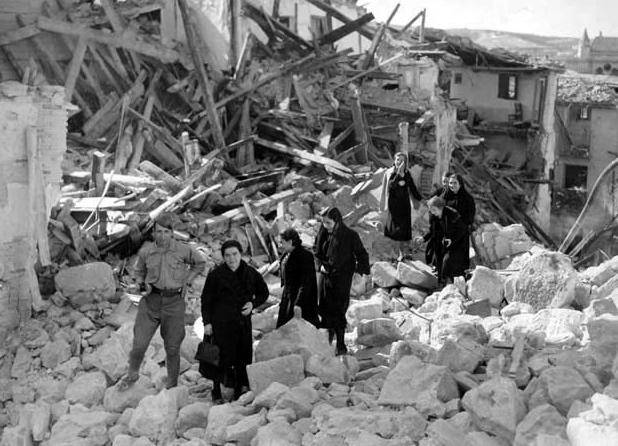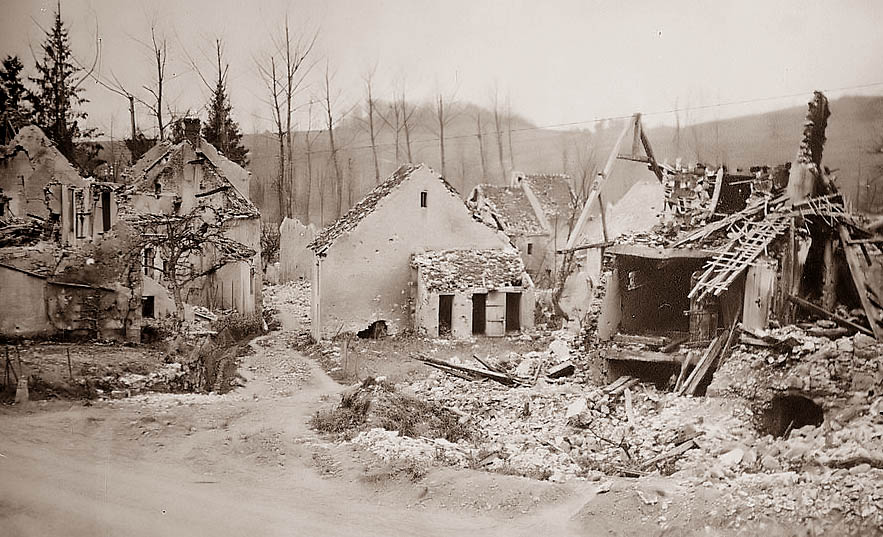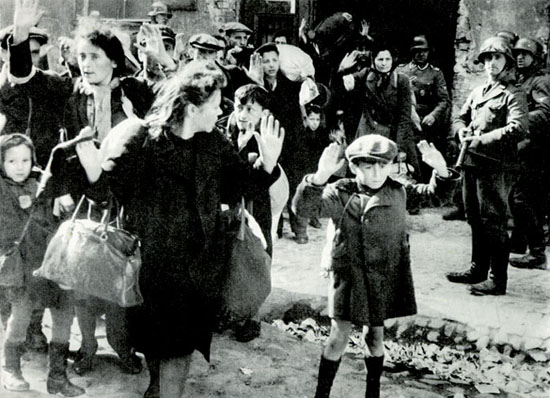 Pathos leads to empathy or sympathy?
Pathos leads to empathy or sympathy? Navigating the site:
Susan Sontag, Regarding the Pain of Others, (2003).
Argument | contents | her perspective | context | memory | national ethos | films | terms | conclusion
A discussion of media’s affect and effects of writing, photography and film on motivating an audience.
Walter Lippmann [an esteemed a journalist] wrote in the year 1922:
“Photographs have the kind of authority over imagination today, which the printed word had yesterday, and the spoken word before that. They seem utterly real.”
p.25.
Alcazar, bombing of Toledo, Spain. 1937, Civil War.
"War is an abomination, a barbarity,"
Virginia Woolf, 1936-37.
"Is there an antidote to the perennial seductiveness of war?" answer
![]()
June 1938, Virginia Woolf, Three Guineas
"her brave, unwelcomed reflections on the roots of war."
p. 3.
Woolf, in response to a question posed to her by a prominent lawyer, about the causes of war wrote about the fact that men and women may see the same images very differently. But she posed that as members of the privileged, "educated classes" the members of the audience could empathize in a similar manner with people who are suffering as depicted in photographs of war victims.
Simone Weil, 1940 "violence turns anyone subjected to it into a thing."
p. 12.
Tyler Hick's November 13, 2001 "A Nation Challenged" in New York Times: photographs.
Tyler Hicks portfolio -- He was Photographer of the Year award 2007
p. 13.
Can people --by looking at photographs-- come to the same or similar conclusions about what they see and what they think the photograph means?
Belleau-Wood was the last major German offensive of the war.
"we see the same...the same ruined houses."
Sontag, Regarding the Pain of Others, p.6.
Argument | her perspective | context | memory | national ethos | films | terms | conclusion
![]()
Sontag is critical of the belief that by looking at photographs of the victims of war – such as the Spanish Civil War, and as Woolf suggests, “we” the audience will somehow “see the same” or agree on the meaning in a similar manner.”
"War was, and still is the most irresistible and picturesque--news. But this war was more than news. It was bad news."
The Crimean War, 1855.
p. 49.
"... that abomination that is war."
p. 125.
The Crimean war was covered by --among others-- Roger Fenton. Fenton, who spent fewer than four months in the Crimea (March 8 to June 26, 1855), produced 360 images under difficult circumstances, but none were of combat.
Instead – 9 chapters later Sontag suggested the “we” as coequal members of the privileged (insulated and distanced) “educated class” are an abstraction and as far as there is a ‘we’ – “we just don’t get it.”
p. 125.
Chapters and substantive content:
- • "the roots of war." An argument with the sentiments of Virginia Woolf (1938).
- • "spectator of calamities" -- "the quintessential modern experience."
- • "the iconography of suffering has a long pedigree."
- • What photographs can do: "embalm death."
- • In history: "War has been the norm and peace the aberration."
- • The capacity to assimilate what photographs actually display.
- • The roles of media, photographs & film are two edged, not obvious.
- • "innocence" of "un-humanity" is a badge of ignorance or "emotional immaturity."
- • "Emblems of suffering:" and what the photographs mean.
Argument | her perspective | context | memory | national ethos | films | terms | conclusion
Abel Gance, J’accuse (1919)
The Ascent (1974)
The Emperor's Naked Army Marches on, (1987)
Gance’s extraordinary breakthrough work, J’Accuse is a World War I drama considered one of the most technically advanced films of the era and the first major pacifist film. This seminal cinematic achievement was referred to by Gance as, “A human cry against the bellicose din of armies.”
World War II in Africa, The Ascent is set in British East Africa during World War II, based on a true story of an Italian prisoner-of-war who escapes to climb Mt. Kenya by challenging his English captor.
96 minutes
Argument | her perspective | context | memory | national ethos | films | terms | conclusion
| Chapter | pages | |
| 1 | 3-17 |
"Whether when we look at the same photographs we feel the same things."
Virginia Woolf, p, 4.
"horror and disgust"
"Who believes today that war can be abolished?"
p. 5.
"And photographs of the victims of war are themselves a species of rhetoric. They reiterate. They simplify. They agitate. They create the illusion of consensus."
p. 6.
| Chapter | pages | |
| 2 | 18-39. |
"facing it on the left was a full page advertisement for Vitalis, a men's hair cream, with a small picture of someone exerting himself at tennis and a large portrait of the same man in a white dinner jacket sporting a head of neatly parted, slicked-down, lustrous hair."
LIFE Magazine and the Vitalis, hair care product advertisement, 1937.
p. 32.
Even without confusing commercial advertisements with war documentary footage, Sontag warns viewers that:
"…the same photograph may be read as showing pathos, or heroism, admirable heroism, in an unavoidable struggle that can be concluded only by victory or defeat.The photographer's intentions do not determine the meaning of the photograph, which will have its own career, blown by the whims and loyalties of the diverse communities that have use for it."
p. 39
| Chapter | pages | |
| 3 | 40-58 |
What does it mean to protest suffering as distinct from acknowledging it?
p. 40
| Chapter | pages | |
| 4 | 59-73 |
"To catch death actually happening and embalm it for all time is only something cameras can do...."
p. 59
Mathew Brady was the owner and the photographer, in whose gallery the display of the Battle of Antietam photographs by Gardner and O'Sullivan on Broadway, New York City, occurred in October, 1862 one month after the greatest carnage ever suffered by the US Armed Forces.
The Battle of Antietam (Creek) or Sharpsburg, Maryland took place on September 17, 1862.
27,000 men perished in twelve hours of intense combat, known to historians as Americas bloodiest day. The Confederate invasion of Maryland, still in the Union, shocked audiences for its audacity and sickened others who where overwhelmed by the loss of life (the stench alone assaulted the senses) suffered to repel General Lee's Army of Northern Virginia.
Upon visiting the battlefield two weeks later for four days, the carnage so shocked President Lincoln that he was morbidly depressed after visiting with the wounded on both sides.
But from the experience Lincoln was reinforced in his resolve to issue the Emancipation Proclamation, that freed all of the slaves in the states then rebelling against Federal authority. That proclamation was the origin of the 13th Amendment that in subsequent years abolished human bondage in the United States.
Argument | her perspective | context | memory | national ethos | films | terms | conclusion
| Chapter | pages | |
| 5 | 74-94 |
Descriptions of dead bodies
"Central to modern expectations and modern ethical feeling is that war is an aberration, if an unstoppable one."
p. 74.
"War has been the norm, and peace the aberration."
"Pity can entail a moral judgment... pity seems diluted--distracted by fear.
"fear usually manages to swamp pity."
p. 75.
"transforming is what art does."
"The photograph gives mixed signals."
"stop this -- What a spectacle."
p. 77.
"in a world in which photography is brilliantly at the service of consumerist manipulations, no effect of a photograph of a doleful scene can be taken for granted."
pp. 79-80
"Photographs objectify, they turn an event or a person into something that can be possessed. And photographs are a species of alchemy, for all that they are prized as a transparent account of reality."
"For photographs to accuse, and possibly to alter conduct, they must shock."
p. 81.
"Does shock have term limits?"
"Habituation is not automatic, for images obey different rules than real life."
p. 82.
"The illustrative function of photographs leaves opinions, prejudices, fantasies, misinformation untouched."
p. 84.
"The familiarity of certain photographs builds our sense of the present and the immediate past."
p. 85.
Society "calls these ideas 'memories,' and that is, over the long run, a fiction.
"Strictly speaking, there is no such thing as collective memory--part of the same family of spurious notions as collective guilt. But there is collective instruction."
p. 85.
"All memory is individual, unreproducible--it dies with each person."
p. 86.
Why don't we as a nation maintain a slavery museum?
"This, it seems, is a memory judged too dangerous to social stability to activate and create."
"The founding and still powerful belief in American exceptionalism."
p. 88.
"The national consensus on American history as a history of progress is a new setting for distressing photographs--one that focuses our attention on wrongs...for which America sees itself as a solution or cure."
p. 88.
"the problem is not that people remember through photographs, but that they remember only the photographs."
"But they (harrowing photos) are not much help if the task is to understand. Narratives can make us understand. Photographs do something else: they haunt us."
p. 89.
| chapter | pages | |
| 6 | 95-103 |
"One should feel obliged to think about what it means to look at them, about the capacity actually to assimilate what they show."
"Not all reactions to to these pictures are under the supervision of reason and conscience."
"...arouse prurient interest."
p. 95.
"People can turn off…because they are afraid."
p. 100.
"And it is not necessarily better to be moved. Sentimentality notoriously, is entirely compatible with a taste for brutality or worse."
"People don't become inured to what they are shown--if that's the right way to describe what happens--because of the quantity of the images dumped on them. It is passivity that dulls feeling."
"a link between the faraway sufferers--seen close-up on the television screen-- and the privileged viewer that is simply untrue."
"our sympathy proclaims our innocence"To set aside as well as our impotence."
"...it can be-- an inappropriate response."
p. 102.
To set aside the sympathy we extend to others beset by war and murderous politics for a reflection on how our own privileges are located on the same map as their suffering, and may--in ways we might prefer not to imagine--be linked to their suffering, as the wealth of some may imply the destitution of others is a task...."
A task which the images can not alone help us to effectively pursue.
pp. 102-103.
Susan Sontag, Regarding the Pain of Others, (2003).
| Chapter | pages | |
| 7 | 104-113 |
"Consider two widespread ideas--now fast approaching the stature of platitudes-- on the impact of photography."
We must quarrel with these assumptions:
The first idea is that public attention is steered by . . . images."
"the determining influence of photographs in shaping what catastrophes and crises we pay attention to, what we care about, and ultimately what evaluations are attached to these conflicts."
pp. 104-105.
" The second idea--is that is a world saturated, no hyper saturated with images, those that should matter have a diminishing effect: we become callous.
In the end, such images just make us a little less able to feel, to have our conscience pricked."
p. 105.
"As much as they create sympathy,…photographs shrink sympathy."
"What is the evidence that our culture of spectatorship neutralizes the moral force of photographs of atrocities?"
p. 105.
| Chapter | pages | |
| 8 | 114-118 |
The problem of distance, emotional shutting-down.
"Still, it seems a good in itself to acknowledge, to have enlarged, one's sense of how much suffering caused by human wickedness there is in the world we share with others."
"has not reached moral or psychological adulthood."
"No one after a certain age has the right to this kind of innocence, of superficiality, to this degree of ignorance, or amnesia."
p. 114.
"Let the atrocious images haunt us."
"The images say….Don't forget."
p. 115.
| Chapter | pages | |
| 9 | 119-126 |
Emblems of suffering
THE WARSAW GHETTO UPRISING
April 19, 1943 - mid May 1943
This boy in the picture of ghetto is a star
from documentary films, war albums,
too large cap is falling
like the universe on his frail shoulders.
"Space reserved for being serious is hard to come by in modern society."
"It seems exploitative to look at harrowing photographs of other people's pain in an art gallery."
p. 119.
“Advertising photographs are often just as ambitious, artful, slyly casual, transgressive, ironic, and solemn as art photography. When Capa’s falling soldier appeared in Life [magazine] opposite the Vitalis™ ad, there was a huge, unbridgeable difference in look between the two kinds of photographs, ‘editorial’ and ‘advertising.’ Now there is not.”
Jeff Wall, 1992 “Dead Troops Talk
(A vision after an ambush of a Red Army Patrol near Moqor, Afghanistan, Winter 1986.)”
p. 123.
“We, this 'we' is everyone who has never experienced anything like what they went through--don't understand.… We truly can't imagine how dreadful, how terrifying war is; and how normal it becomes."
pp. 125-126.
Memento mori -- recollection of the dead, "reminder of death" -- death's memento
Ambience of distraction -- the outcome of museums and galleries displaying art works
p. 120.
pathos -- literally from the Greek, pitiable in that Oedipus Rex was--after his self blinding -- a pitiable person.
emotive expression of pity, or feelings of shame, or, sadness, a tragic sense of reality that is felt, hence pitiable.
empathy versus sympathy -- the ability to authentically relate to another in a way that we share feelings with another versus the expression of pity or sorrow in concert with others for their suffering, loss or pain.
pacifism -- the movement based on Quaker religious principles that killing is wrong that influenced foreign policies in the 1920s.
anti-war -- the specific manifestation of opposition to particular conflicts, especially since 1945,
feminist -- the belief that all men and women are equal and ought to be treated as such.
misplaced sentiment -- the confusion of behavior and meaning where the expression of emotion is insubstantial or at odds with --that is contradicted by the overall behavior pattern. Such as the use of sexually explicit material to sell products.
sentiment -- the expression of an opinion or attitude, that with exaggerated feelings can become emotionally self-indulgent rather than an astute expression of sadness or appropriate tenderness; longing or nostalgia.
Argument | her perspective | context | films | terms | conclusion
- • "the roots of war." An argument with the sentiments of Virginia Woolf (1938).
- • "spectator of calamities" -- "the quintessential modern experience."
- • "the iconography of suffering has a long pedigree."
- • What photographs can do: "embalm death."
- • In history: "War has been the norm and peace the aberration."
- • The capacity to assimilate what photographs actually display.
- • The roles of media, photographs & film are two edged, not obvious.
- • "innocence" of "un-humanity" is a badge of ignorance or "emotional immaturity."
- • "Emblems of suffering:" and what the photographs mean.
Making connections to Postman:
Photographs lack characteristics important to reflective thought?
Imagery, photographically mass produced, created a revolution in culture?
The triumph of the commercial.
Argument | her perspective | context | films | terms | conclusion
![]()
![]() eco-justice
eco-justice ![]() ecology
ecology ![]() utilitarianism
utilitarianism
- accounting for nature
- agencies & relief
- constraints
- Crimes
- demand
- John Dewey
- economic study
- economic side-effects
- gestalt psychology schema
- Martin Heidegger's critique
- labor
- land value
- Malthus
- Merchant's schema
- population
- Neil Postman
- poverty
- problem solving
- Sontag and Postman
- value
- wealth





